29 Books Every Artist Needs on Their Bookshelf | Best Books Every Artist Needs on Their Bookshelf | Best books for artist | Best inspiration art books | Resources for the self-taught artist
As artists, we must never stop learning.
One of the most challenging parts about leaving art school or starting your own journey as a self-taught artist and you no longer have a built-in support system. There isn’t anyone telling you to get to the studio at a certain hour, and there aren’t assignments or peers to turn to when you start to doubt your progress.
I believe that as artists we must never stop learning, sharing and growing. Knowing where to look when you need to gather inspiration or ideas can help you feel like you aren’t alone on this path.
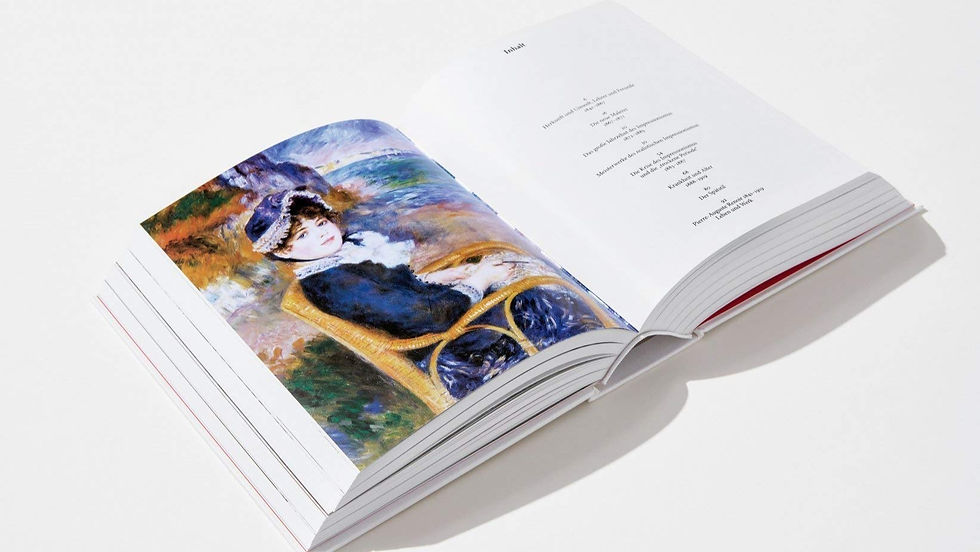
Were you looking for inspiration and encouragement?
Here Are Some Books Every Artist Needs on Their Bookshelf
The only color guide a designer will ever need; The Complete Color Harmony, Pantone Edition has been completely updated with Pantone colors and new text.
The Complete Color Harmony: Pantone Edition is the latest in Rockport Publishers' best-selling Color series. This edition has been completely revised from start to finish, and now features new text by Leatrice Eiseman, executive director of the Pantone Color Institute. And the color "moods" that she writes about in each chapter are based on and matched with Pantone colors. The book expands on previous editions for the most comprehensive color reference to date.
This edition includes information on creating special effects, as well as an entirely new section devoted to the psychology of color.
Eiseman helps readers determine their best color choices and suggests why some colors may inspire their creativity while others don't. The book includes new color palette sections along with expanded and updated color trends.
The Secret Lives of Color tells the unusual stories of seventy-five fascinating shades, dyes, and hues. From blonde to ginger, the brown that changed the way battles were fought to the white that protected against the plague, Picasso’s blue period to the charcoal on the cave walls at Lascaux, acid yellow to kelly green, and from scarlet women to imperial purple, these surprising stories run like a bright thread throughout history.
In this book, Kassia St. Clair has turned her lifelong obsession with colors and where they come from (whether Van Gogh’s chrome yellow sunflowers or punk’s fluorescent pink) into a unique study of human civilization.
The Story of Art, one of the most famous and popular books on art ever written, has been a world bestseller for over four decades. Attracted by the simplicity and clarity of his writing, readers of all ages and backgrounds have found in Professor Gombrich a true master, and one who combines knowledge and wisdom with a unique gift for communicating his deep love of the subject.
For the first time in many years, the book has been completely redesigned. The illustrations, now in color throughout, have all been improved and reoriginated, and include six fold‐outs. The text has been revised and updated where appropriate, and a number of significant new artists have been incorporated. The bibliographies have been expanded and updated, and the maps and charts were redrawn.
The Story of Art has always been admired for two key qualities: it is a pleasure to read and a pleasure to handle. In these respects the new edition is true to its much‐loved predecessors: the text runs as smoothly as ever and the improved illustrations are always on the page where the reader needs them. In its new edition, this classic work continues its triumphant progress tirelessly for yet another generation, to remain the title of the first choice for any newcomer to art or the connoisseur.
This richly diverse exploration of female artists and self-portraits is a brilliant and poignant demonstration of originality in works of haunting variety. The two earliest self-portraits come from 12th-century illuminated manuscripts in which nuns gaze at us across eight centuries. In 16th-century Italy, Sofonisba Anguissola paints one of the longest series of self-portraits, spanning adolescence to old age. In 17th-century Holland, Judith Leyster shows herself at the easel as a relaxed, self-assured professional.
In the 18th century, artists from Elisabeth Vigée-Lebrun to Angelica Kauffman express both passion for their craft and the idea of femininity; and in the 19th the salons and art schools, at last, opened their doors to a host of talented women artists, including Berthe Morisot, ushering in a new and resonant self-confidence. The modern period demolishes taboos: Alice Neel painted herself nude at eighty, Frida Kahlo rendered physical pain, Cindy Sherman explored identity, and Marlene Dumas dispensed with all boundaries. The full verve of Frances Borzello’s enthralling text, and the hypnotic intensity of the accompanying self-portraits, are revealed to the full in this inspiring book.
A unique system for jump-starting artistic creativity, encouraging experimentation and growth, and increasing sales for artists of all levels, from novices to professionals. Have you landed in a frustrating rut? Are you having trouble selling paintings in galleries, getting bogged down by projects you can’t seem to finish or abandon, or finding excuses to avoid working in the studio? Author Carol Marine knows exactly how you feel—she herself suffered from painter’s block until she discovered “daily painting.” The idea is simple: do art (usually small) often (how often is up to you), and if you’d like, post and sell it online. Soon you’ll find that your block dissolves and you’re painting work you love—and more of it than you ever thought possible!
With her encouraging tone and useful exercises, Marine teaches you to: -Master composition and value -Become confident in any medium including oil painting, acrylic painting, watercolors, and other media -Choose subjects wisely -Stay fresh and loose -Photograph, post, and sell your art online -Become connected to the growing movement of daily painters around the world.
Draw with Confidence and Creativity! New in paperback! Creativity occurs in action. It is not a trait; it is something you do. To be creative, you need to engage in the art-making process. When you are "in the flow," you shift out of the future and into the present, making connections, generating variations and surrendering to the process. This ten-year edition of Keys to Drawing With Imagination is a course for artists on how to take something, do something to it and make something new. Bert Dodson, author of the best-selling Keys to Drawing presents fun techniques and mind-stretching strategies to get you drawing better and more imaginatively than you ever have before.
In every section, he offers you basic guidelines that help you channel your creative energies in the right direction. Before you know it, you'll lose yourself in the process, enjoying the experience as you create something gratifying and worthwhile. The subjects covered in this hands-on book are as vast as the imagination itself. Through 58 strategies, 36 exercises and 13 step-by-step demonstrations, you'll explore how to: • Take your doodling from mindless to masterful • Create your own reality by crumbling, melting or breaking objects • Flip the familiar on its ear to create something utterly original • Experiment with visual paradox and metaphor • Tell vivid stories through the details in your drawings • Play with patterns to create captivating compositions • Build your drawings by borrowing ideas from different cultures • Develop a theme in your work Along the way, Dodson offers you priceless advice on the creative process culled from his 70 years of drawing and teaching. For additional inspiration and encouragement, he includes the work of 30 other outstanding artists, including R. Crumb and Maya Lin. So what are you waiting for? Grab this book and start drawing! You'll be amazed at what you can create.
During his career as one of America's most sought-after illustrators, Andrew Loomis (1889-1959) taught at the American Academy of Art in Chicago, and in 1939 he codified his lessons in his first manual, Fun with a Pencil. Four years later it had already been through six printings, and he followed up over the next two decades with a series of even more successful how-to books that remain the gold standard for artists to this day. Creative Illustration is considered Loomis's magnum opus, which was aimed primarily at the professional-level illustrator. Divided into seven sections: Line, Tone, Color, Telling the Story, Creating Ideas, Fields of Illustration, and Experimenting and Studies, this book is filled with instructions, tips, insider experiences, and incredible illustrations.
"Author Jeff A. Menges has done a superb job of choosing a fantastic array of artists, providing representative and dazzling examples of their work and presenting them with succinct, erudite commentary that introduces you to each artist and puts them in the context of their time." &; Lines and Color
The most comprehensive book of its kind, this gorgeous edition presents more than 600 works, over 350 in full color, by famous and lesser-known artists from the heyday of book and magazine illustration. Featured artists include Walter Crane, Edmund Dulac, Maxfield Parrish, Howard Pyle, Arthur Rackham, N. C. Wyeth, and many others &; 101 in all. Several examples of each artist's finest illustrations are accompanied by biographical comments and career notes.
Additional artists include Victorian-era illustrator Aubrey Beardsley, noted for his compelling combinations of the erotic and grotesque; American painter Harvey Dunn, one of Howard Pyle's most accomplished students; James Montgomery Flagg, famed for his U.S. Army recruitment posters; Charles Dana Gibson, creator of the iconic Gibson Girl; Charles R. Knight, a pioneer in the depiction of dinosaurs and other prehistoric creatures; Edward Penfield, the king of poster art; Frederic Remington, whose works document the Old West; J. Allen St. John, the principal illustrator of Edgar Rice Burroughs's adventure tales; and dozens of others.
From New York Times best-selling author of the Dinotopia series, James Gurney, comes a carefully crafted and researched study on color and light in paintings. This art instruction book is the follow-up to the acclaimed Imaginative Realism: How to Paint What Doesn't Exist. James Gurney, New York Times best-selling author and artist of the Dinotopia series, follows Imaginative Realism with his second art-instruction book, Color and Light: A Guide for the Realist Painter. A researched study on two of art's most fundamental themes, Color and Light bridge the gap between abstract theory and practical knowledge. Beginning with a survey of underappreciated masters who perfected the use of color and light, the book examines how light reveals form, the properties of color and pigments, and the wide variety of atmospheric effects. Gurney cuts through the confusing and contradictory dogma about color, testing it in the light of science and observation. A glossary, pigment index, and bibliography complete what will ultimately become an indispensable tool for any artist. This book is the second in a series based on his blog. His first in the series, Imaginative Realism, was widely acclaimed in the fantastical art world, and was ranked the #1 Bestseller on the Amazon list for art instruction."James Gurney's new book, Color and Light, cleverly bridges the gap between artistic observation and scientific explanation. Not only does he eloquently describe all the effects of color and light an artist might encounter, but he thrills us with his striking paintings in the process."
From the award-winning artist, learn to see and shape the world in a way you never before imagined. An award-winning fantasy artist and the creator of Dinotopia, James Gurney instructs and inspires in Imaginative Realism: How to Paint What Doesn't Exist. Renowned for his uncanny ability to incorporate amazing detail and imagination into stunningly realistic fantasy settings, James Gurney teaches budding artists and fans of fantasy art step-by-step the techniques that won him worldwide critical acclaim. This groundbreaking work examines the practical methods for creating believable pictures of imaginary subjects, such as dinosaurs, ancient Romans, alien creatures, and distant worlds. Beginning with a survey of imaginative paintings from the Renaissance to the golden Age of American illustration, the book then goes on to explain not just techniques like sketching and composition, but also the fundamentals of believable world building including archaeology, architecture, anatomy for creatures and aliens, and fantastic engineering. It concludes with details and valuable advice on careers in fantasy illustration, including video game and film concept art and toy design. More than an instruction book, this is the ultimate reference for fans of science fiction and fantasy illustration."Gurney's Imaginative Realism is a gold mine for artists who want to create images that sing with authority and delight the viewer with rich otherworldly visuals." --Erik Tiemens, concept artist, Star Wars: Episodes II and III"Imaginative Realism is an indispensable, flawless reference for vision makers in any discipline to create their own imaginative realms."
All artists are tired of persuading their nearest and dearest to look sad…look glad…look mad…madder…no, even madder…okay, hold it. For those artists (and their long-suffering friends), here is the best book ever. Facial Expressions include more than 2,500 photographs of 50 faces—men and women of a variety of ages, shapes, sizes, and ethnicities—each demonstrating a wide range of emotions and being shown from multiple angles. Who can use this book? Oh, only every artist on the planet, including art students, illustrators, fine artists, animators, storyboarders, and comic book artists. But wait, there’s more! Additional photos focus on people wearing hats and couples kissing, while illustrations show skull anatomy and facial musculature. Still not enough? How about a one-of-a-kind series of photos of lips pronouncing the phonemes used in human speech? Animators will swoon—and artists will show a range of facial expressions from happy to happiest to ecstatic.
This new and enlarged third edition contains a new section on hands, selected by Heidi Lenssen; a wide selection of illustrations from the works of Vesalius, Leonardo, Goya, Ingres, Michelangelo, and others, newly augmented with 10 plates from Cloquet's "Anatomie de l'Homme" and 16 illustrations from Boscay's "Anatomy"; 28 photographs of growing children from the research work of Nancy Bayley, plus 6 action studies (each consisting of about 30 photographs) from Muybridge; a bibliography compiled by Adolph Placzek; a total of more than 350 illustrations, showing the placement, function, and characteristics of every anatomical detail of importance to the artist.
For more than forty years, this book has been recognized as the most thorough reference work on art anatomy in the world. Now, it recommends itself even more strongly to the serious artist as an important study aid. Among its features are: (1) Clear, systematic presentation, taking the student step by step from the simpler skeletal drawings at the beginning to the more complicated body-in-action sketches at the end. (2) The juxtaposition of anatomical drawings and life photographs, makes it easy to compare the inner structure of the body with its outer form. (3) Cross-section drawings that give the artist a thorough understanding of the relation of the muscles to each other, to the bone structure, and to the internal organs of the body. (4) Anatomical action drawings that reveal the interplay of muscles and skeleton in different positions. (5) The comparative proportions of the male, female, child, and adolescent. (6) A supplementary text on important features of each anatomical position, including the action of the muscles and their origin.
"I recommend Fritz Schider's Atlas of Anatomy for Artists to those who wish to increase their understanding of the human figure."
The mad scientist of the Moleskine, European illustrator Mattias Adolfsson’s lush sketchbook drawings is collected for the first time in North America.
For the first time in North America, brilliant Swedish illustrator Mattias Adolfsson’s incredibly lush sketchbook illustrations are collected in a facsimile Moleskine edition. Adolfsson, in between assignments for the New York Times, videogame design, children’s books and other major publications, spends his time filling untold Moleskines with intricate and beautifully detailed drawings of whatever strikes his fancy. From hot-rod spaceships to rocket-fueled fountain pens, from baroque robots to Richard-Scary-gone-berserk cityscapes, Adolfsson uses his imagination to create everything mad scientists world over haven’t even begun to dream up.
Babies are so unpredictable. You put them down in one place, you never know if they’ll be there when you come back. And don’t even get us started on kids and teens. Artists have it particularly rough with volatile young people because their facial expressions are just as fleeting. Happy one minute, sad the next. Puzzled for a second, then astounded. Facial Expressions Babies to Teens solves the artists’ problems with a dazzling array of more than 2,500 photographs of fifty babies, kids, and teens demonstrating every human emotion through facial expression. Artists, animators, cartoonists - everyone who needs to capture any look from babyhood to age 19 must have a copy of this fascinating reference. With extra sections on anatomy, hats, and close-ups of phonemes, plus a remarkable age-progression gallery, Facial Expressions Babies to Teens is the only book an artist can really depend on. And we promise it will stay right where you put it, every time.
The catalogue of the sold-out exhibition at the Art Institute of Chicago, a rich and unprecedented exploration of Chicago’s embrace of Claude Monet’s modernism
"Monet and Chicago is a stunner."―The Chicago Tribune (exhibition review)
In 1903, the Art Institute of Chicago became the first American museum to buy a painting by Claude Monet (1840–1926), beginning a tradition of collecting that has inextricably connected this midwestern city to the French Impressionist master. Tracing Chicago’s unique relationship with the artist, this generously illustrated volume not only features well-known works in the Art Institute’s holdings, such as the six Stacks of Wheat paintings and four Water Lilies, but also includes works on paper and rarely seen still lifes, landscapes, and photographic material from private Chicago collections. Stunning reproductions of details at actual size, a delightful essay by Adam Gopnik, and a richly illustrated chronology combine to reveal the depth of the city’s continuing devotion to an adopted artistic hero.
In this volume, top artists share proven techniques for painting portraits, distant figures, bustling crowds and other realistic human scenes in a variety of mediums, including acrylic, oils, watercolour, pastels and coloured pencils.'
Each entry includes a large-scale four-colour reproduction of a specific work, a brief biographical sketch and illustrations, photographs and documents.
The timeless classic on drawing human figures is back! Following impressive runs by Sterling's previous editions comes a new, redesigned version of George W. Bridgman's landmark work. It combines six well-known books by the celebrated artist and lecturer, who taught figure and anatomy drawing for many years at New York City's Art Students League. This edition preserves Bridgman's lessons and original sketches, but now features a nostalgic, eye-catching cover that distinguishes it from the competition. In its sleek new format, this comprehensive guide will certainly continue its reign as one of the premier figure-drawing publications of all time.
Another title from The Crown Art Library, the most useful monographs available on a wide range of significant artists. Each volume is written by an internationally recognized authority and is generously illustrated with full-colour reproductions of the artist's paintings and two-color reproductions of sketches and line drawings.
This book offers practical help and guidance to aspiring illustrators. All areas of the job are covered – creating a portfolio; approaching potential clients; preparing for meetings and negotiating contracts; setting up a studio; maintaining a flow of work and managing one’s time and cash. Self-promotion, creating websites, self-publishing and the pros and cons of agents are all explored. International illustrators are interviewed, discussing how they got their break in the industry, their experiences with clients, their methods of promoting work and more. In addition, leading art directors describe their approach to commissioning illustration, how they spot new talent, their thoughts on promotional material and their advice to up-and-coming illustrators. Packed with useful tips gleaned from the author’s own career as an illustrator, and his work as an agent handling some of the best new talents, the book is an essential read for anyone looking to succeed in illustration.
Unlock your inner artist and discover how to draw the human body in this beautifully-illustrated art book by celebrated artist and teacher, Sarah Simblet. Whether you're looking to develop a new skill this New Year or develop your drawing skills even further, this visually-striking guide offers a fresh approach to drawing the human body.
Dive straight in to discover:
-Over 250 specially-commissioned photographs and drawings
-Covers each part of the human body from head to toe
-10 masterclasses demonstrate how famous artists have depicted the human body
-Practical advice and top tips on life drawing
Combining stunning photographs of models with historical and contemporary works of art and her own dynamic life drawing, Sarah will take you on a journey inside the human body to map its skeleton, muscle groups and body systems. Bring your artwork to life in the most dynamic way possible, with detailed line drawings superimposed over photographs to reveal the links between the body's appearance and its construction. Featuring inspirational master classes on world-famous artworks, from Michelangelo to Hans Holbein, Ingres to Degas and more, discover how artists have depicted the human body over centuries. Each master class features a photograph of a model holding the same pose as in the painting, to highlight key details of anatomy and show how the artist has interpreted them.
Understanding anatomy is the foundation for understanding the human body successfully.
As well as being the perfect reference, Anatomy for the Artist will inspire you to find a model, reach for your pencil and start drawing! Let DK plant the seed of curiosity and watch as it develops into a lifelong love of art, anatomy and more.
A must-have volume for artists of all levels who wish to tackle life drawing, or those interested in human anatomy, whether as a gift or self-purchase.
Discover how scenes of daily life and delicate dabs of color shocked the art world establishment. in this TASCHEN Basic Art introduction to Impressionism, we explore the artists, subjects, and techniques that first brought the easel out of the studio and shifted artistic attention from history, religion, or portraiture to the evanescent ebb and flow of modern life. As we tour the theatres, bars, and parks of Paris and beyond, we take in the movement’s radical innovations in style and subject, from the principle of plein-air painting to the rapid, broken brushwork that allowed the Impressionists to emphasize spontaneity, movement, and the changing qualities of light. We take a close look at their unusual new perspectives and their fresh palette of pure, unblended colors, including many vividly bright shades that brought a whole new level of chromatic intensity to the canvas. Along the way, we recognize Impressionism’s established greats, such as Edgar Degas, Claude Monet, Berthe Morisot, and Camille Pissarro, as well as many associated artists worthy of closer attention, including Marie Bracquemond, Medardo Rosso, and Fritz von Uhde. About the series born back in 1985, the Basic Art Series has evolved into the best-selling art book collection ever published. Each book in TASCHEN’s Basic Art History series features: approximately 100 colour illustrations with explanatory captions detailed, illustrated introduction selection of the most important works of the epoch, each presented on a two-page spread with a full-page image and accompanying interpretation, as well as a portrait and brief biography of the artist
Designed to address the issues of how to paint and what to paint, PAINTING AS A LANGUAGE covers a wide range of information of central importance to the beginning and intermediate painting instruction. The authors emphasize the value of the student's cognitive understanding of the process and potential of painting in the student's overall progress in the studio. Blending journal writing with painting and drawing exercises guides the student through selecting meaningful subject matter as well as becoming adept at shaping and interpreting that material through the language of painting.
The lives and oeuvres of Impressionist pillars Cézanne, Degas, Gauguin, Manet, Monet, Renoir, Rousseau, Seurat, Toulouse-Lautrec, and van Gogh are each explored in-depth in TASCHEN’s Basic Art series. Now, this volume combines all 10 monographs into one for the price of three.
What we take for granted today—the relativity of perception depending on the viewer, lighting mood, or location of the object—was then the inspiration for some of the finest paintings in art history. Consider Monet’s 30+ variations of the Rouen Cathedral, Cézanne’s dazzling experimentation with color, Gauguin’s primitivist innovations, or Manet’s scandalous nudes: rarely has a single genre produced so many brilliant artists in such a short time.
Since 1985, TASCHEN’s Basic Art series has published some 200 individual volumes, making it the world’s most successful art-book series.
Each title contains extensive text on the artist’s life and work, a detailed biography, and some 100 high-quality color illustrations with explanatory captions. With Ten in One, TASCHEN now presents ten Basic Art monographs in one volume. A must for every art lover!
This book gathers ten Basic Art monographs into one volume featuring:
Cézanne, Degas, Gauguin, Manet, Monet, Renoir, Rousseau, Seurat, Toulouse-Lautrec, and van Gogh
Teeming with tapestries, manuscript illuminations, carpets, and tiles, this far-reaching compendium brings together the two greatest 19th-century catalogues of ornament into one indispensable reference book. Encompassing designs from medieval times through to the 19th century, in styles as diverse as Egyptian, Etruscan, or Middle Eastern,
In pursuit of both knowledge and delight, the craft of botanical illustration has always required not only meticulous draftsmanship but also a rigorous scientific understanding. This new edition of a TASCHEN classic celebrates the botanical tradition and talents with a selection of outstanding works from the National Library of Vienna, including many new images.
From Byzantine manuscripts right through to 19th-century masterpieces, through peonies, callas, and chrysanthemums, these exquisite reproductions dazzle in their accuracy and their aesthetics. Whether in gently furled leaves, precisely textured fruits, or the sheer beauty and variety of colors, we celebrate an art form as tender as it is precise, and ever more resonant amid our growing awareness of our ecological surroundings and the preciousness of natural flora.
Accompanying a major exhibition, this is the first book devoted to the career of this renowned American painter through his brilliant portraits. John Singer Sargent (1856–1925) was one of the leading painters of his generation, whose captivating portraits are universally admired for their insight into character, the radiance of light and color, and painterly fluency and immediacy. This unprecedented book showcases Sargent’s cosmopolitan career in a new light—through his bold portraits of artists, writers, actors, and musicians, many of them his close friends—giving us a picture of the artist as an intellectual and connoisseur of the music, art, and literature of his day. Whether depicted in well-appointed interiors or en Plein air, the cast of characters includes many famous subjects, among them Claude Monet, Auguste Rodin, Gabriel Fauré, Vaslav Nijinsky, W. B. Yeats, Robert Louis Stevenson, and Henry James. Structured thematically and according to the places Sargent worked and lived—Paris, London, New York, Italy, and the Alps—this book unites informative essays by noted scholars with a wealth of imagery to offer fresh insights into Sargent’s life and work.
Gustav Klimt: 1862-1918; the World in Female Form
The unfading popularity of Gustav Klimt (1862–1918) attests not only to the particular appeal of his luxuriant painting but also to the universal themes with which he worked: love, feminine beauty, ageing, and death.
The son of a goldsmith, Klimt created surfaces of ornate and jewel-like luminosity which show the influence of both Egyptian and Japanese art. Through paintings, murals, and friezes, his work is defined by radiant color, fluid lines, floral elements, and mosaic-like patterning.
With subjects ranging from sensuality and desire to anxiety and despair, all this iridescence is also suffused with feeling. Klimt’s numerous images of women, characterized by curvaceous forms, tender flesh, red lips, and flushed cheeks, were particularly charged with passion, at a time when such frank eroticism was still taboo in Viennese upper-middle-class society.
This book presents a selection of Klimt’s work, introducing his pictorial world of decoration and desire, as well as his influence on artists to come.
About the series
Born back in 1985, the Basic Art Series has evolved into the best-selling art book collection ever published. Each book in TASCHEN’s Basic Art series features:
a detailed chronological summary of the life and oeuvre of the artist, covering his or her cultural and historical importance
a concise biography
If you enjoyed this blog post 29 Books Every Artist Needs on Their Bookshelf
and want to read all the posts read it here
*This blog post contains some affiliate links, which means that if you make a purchase through one of my links, I may earn a small commission – at no extra cost to you. Thanks!
If you want to receive news updates and blog post updates then subscribe to my newsletter.
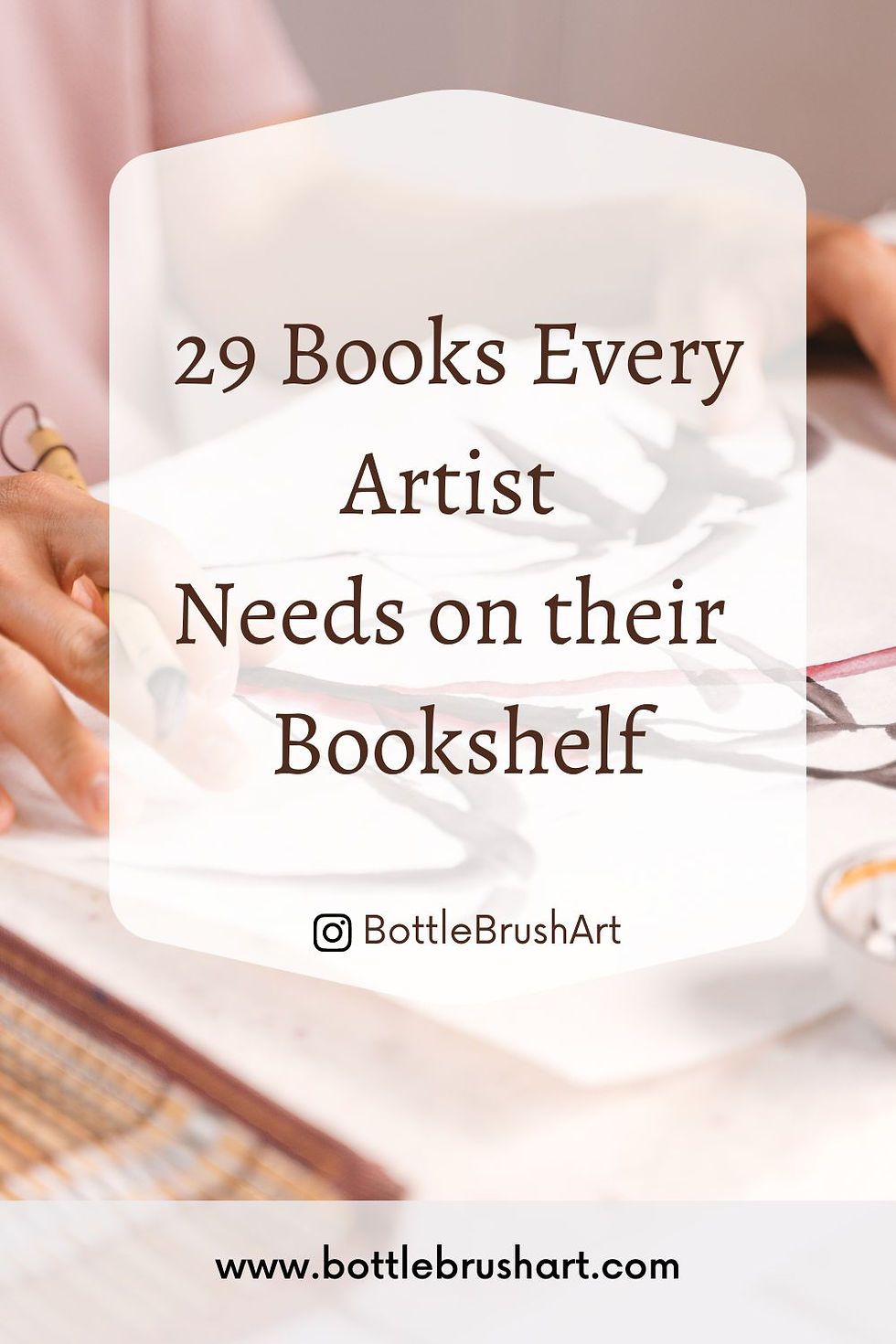
.png)
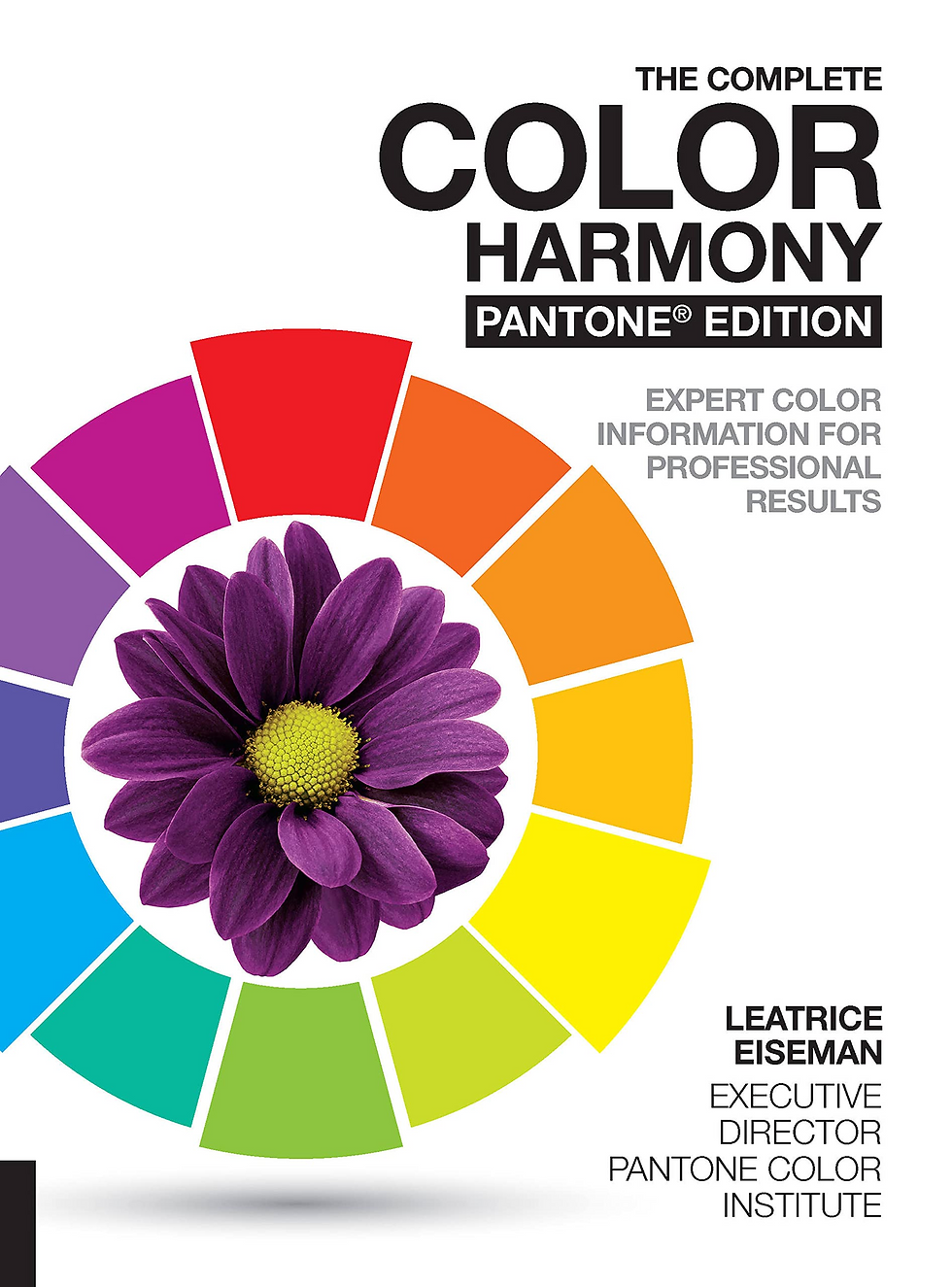










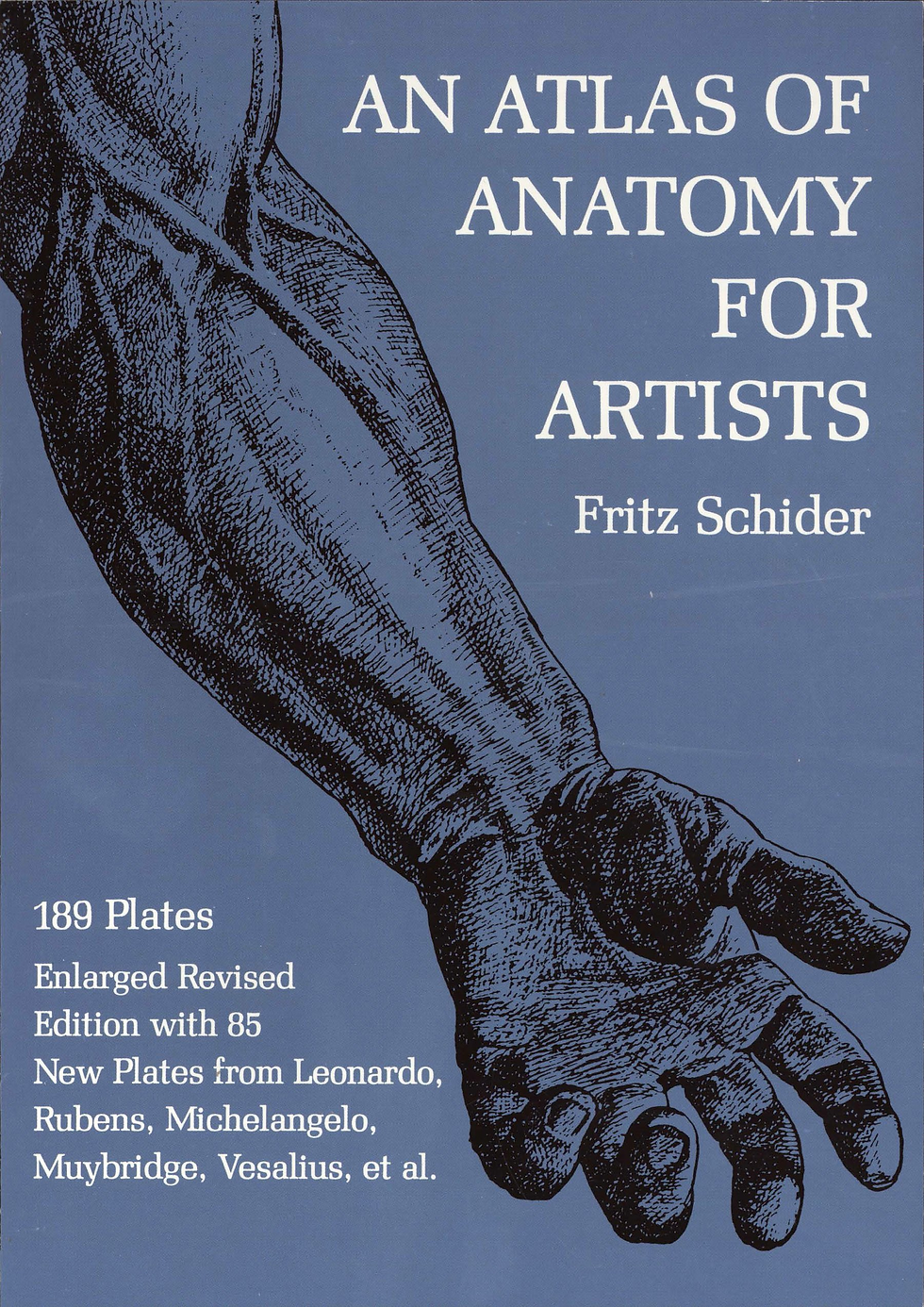

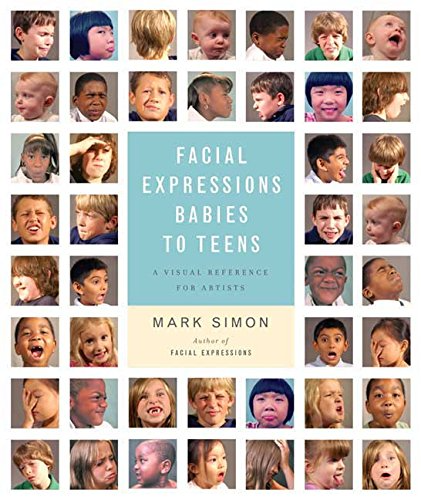











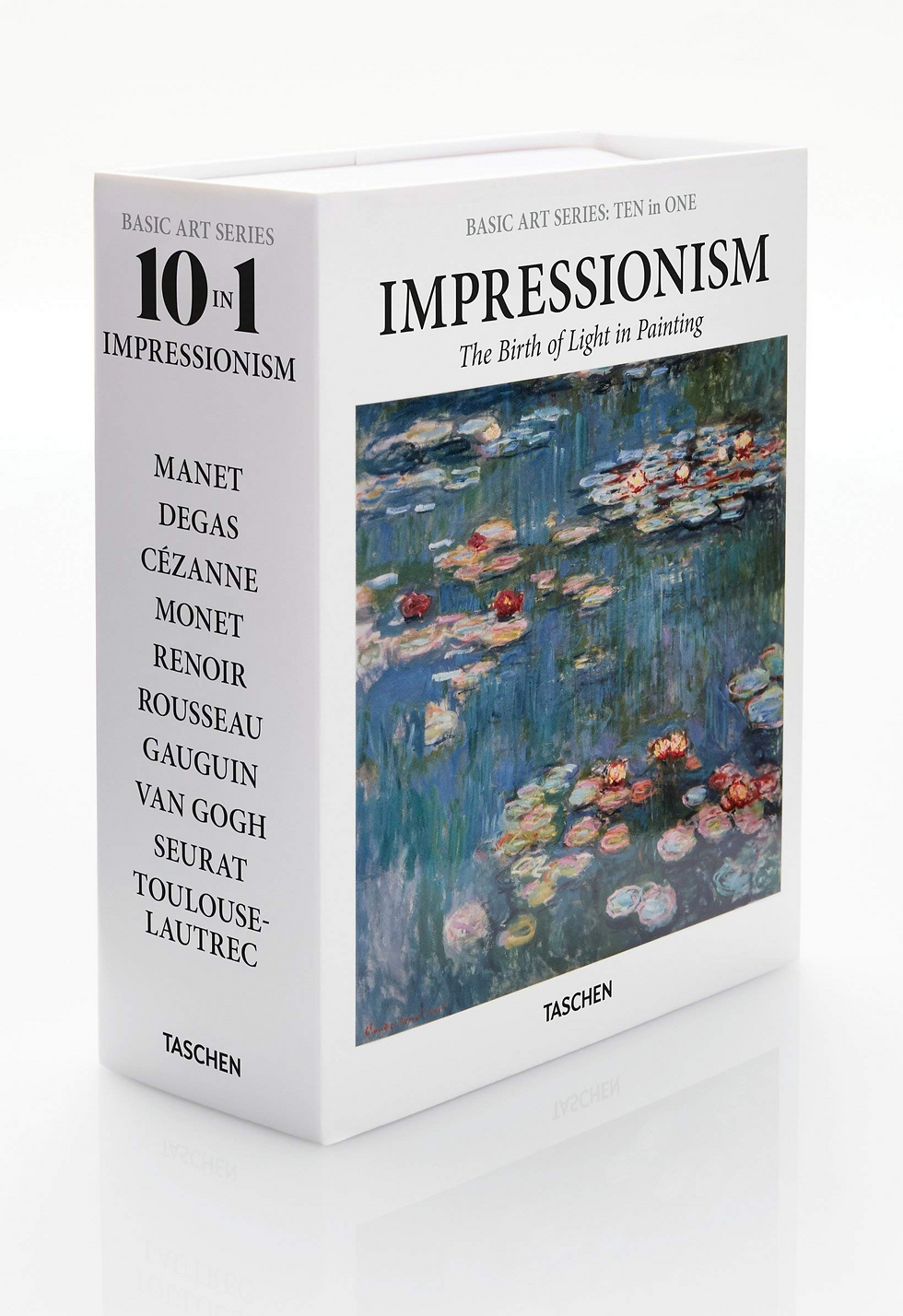























Comments